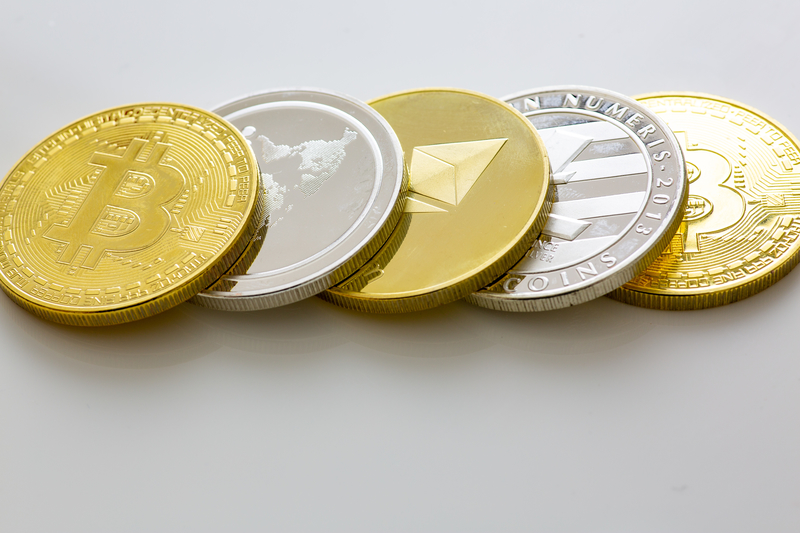Crypto currencies: Facts & background

Cryptocurrencies or digital currencies as it is also called – is a vague topic for many. It is still relatively new and has been met with skepticism from many quarters, despite the fact that both small countries such as the Bahamas have released central bank-backed Sand Dollars and China is conducting tests with a digital yuan in Shenzhen, among other places.
It is clear that more people are opening their eyes to trading cryptocurrencies, not least because the value of cryptocurrencies is reaching new heights almost every day.
How big the value can actually be is impossible to predict, but it may well be the start of something completely new. How safe the explanation is for “currency” can be difficult to see, but here you can read everything you need to know to understand what cryptocurrencies are.
Table of Contents: Overview
What is Crypto Currencies?
BTC (Bitcoin) is usually seen as the original among Cryptocurrencies and Blockchain. In 2009, creator Satoshi Nakamoto officially announced that a concept for a hitherto unsolved problem now really worked perfectly. He said that “this first launch of Bitcoin involves a new electronic money system. It uses a form of “peer system” to counter duplicate transactions, and is fully decentralized and has no central authority or server. ” It is actually a very good but short explanation of how the system works, but not everyone has full control of the functions.
Satoshi built a decentralized digital money system in the same way that a file-sharing network is built. It provided the opportunity for a digital currency that is entirely based on supply and demand and that is not based on inflation.
To create a digital currency, you first need to have access to an account balance and transactions. Then it is important to keep track of these accounts and all transactions, something that proved to be very difficult for third-party parties in a financial transaction. The problem that Satoshi solved was the duplication of payment network transactions, which means a theoretical risk for one party to spend the same money twice.
Central banks use a similar function, although digital currency often has a version of performing this verification to counter double transactions.
The idea behind file-sharing networks proved to work just as well for verifying the authenticity of files as for other information. The solution that Satoshi came up with was as ingenious as simple and he proved that it was entirely possible to put together a flawless method to keep track of the problem that had hitherto put a stop to similar services.
What is Blockchain?
In normal cases, it is a central unit that is given the task of recording all transactions. This means that many different separate departments have to work together but in different places and send information back and forth. This can lead to an account being forgotten in the crowd. It’s a form of networking, but Blockchain is a digital network. Each member of the network needs to verify a piece of information to approve it and there needs to be full consensus to validate the verification.
Once the information for the transaction is verified, it is added to the rest in the form of a virtual database, or a “block”, where it becomes part of an encrypted code.
How does the mechanism behind Blockchain work?
Cryptocurrencies like Bitcoin basically only consist of one network. Each member of the network has full access to the network’s entire history, hence the details of all accounts and transactions.
A file for a transaction informs that “Johan gives X Bitcoin to Malin” should be signed with a private “key”. The transaction becomes known to the network immediately, but does not become valid until it is verified by all peers in the network.
Verification is a must and this is also the reason why the banks’ processing time takes “3 to 5 banking days”. The longer a transaction is not verified, there is a chance to change it, there are apparently ways to hack the system. With Blockchain, it works immediately and as soon as a verification is done, it becomes part of the network’s encrypted code – also known as Blockchain.
How to Create Cryptocurrencies??
All transactions are verified by network members, also known as “Miners”. Only miners can do the work, it’s their job in a network of cryptocurrencies. They handle a transaction, mark it as verified and forward it to the network where it becomes part of the system. For this job, miners get paid, usually in the form of a cryptocurrency.
Anyone can become a miner. There is no central entity that has the authority to delegate these tasks, so there must be a way to prevent one party from using another. Therefore, Satoshi set the rule that miners must invest work themselves to become qualified. The work consists of cryptography, in short you need to find a “Hashtag” (a special command for coding) that proves that work has been done. This is called mining, or digging.
Mining consists of solving a cryptological puzzle. After a miner has found a solution to the puzzle, he must build a block and add it to the blockchain. For this, the miner is paid in cryptocurrency. This is the only way to create cryptocurrencies.
Bitcoin can only be created by solving a cryptological puzzle that gets harder and harder each time.
A brief explanation of cryptocurrencies
If you remove all the nonsense around cryptocurrencies and sum it up in a simple way, you can say that there are only limited accounts in a database that no one can change without fulfilling specific conditions. Believed or not, but it is also a specific definition of any currency.
Take any bank. A currency is nothing more than a system of limited, controlled and verified records of transactions of an account in a database.
Benefits of a cryptocurrency
There are mainly 5 advantages of cryptocurrency compared to fiat currency or commodities.
Cryptocurrency is irreversible. Once a transaction has been verified, there is no chance for anyone to edit the transaction.
The anonymity. Neither accounts nor transactions are linked to a physical identity, but are only available at a digital address (a seemingly completely sporadic code of 30 characters).
Fast and global. Transactions go almost instantly and are verified within a few minutes on a global network. It does not matter if you send money to your neighbor or to China.
Security. Cryptocurrencies are locked in a cryptographic system. Long codes and a little mathematical magic make it impossible to hack the system.
Freedom. There is no need to ask for permission, you just need to download a program for free.
Cryptocurrencies are digital gold. Real money that is safe from political influence and that increases in value in the long run. It is also a fast and easy way to send money all over the planet in a set that is both private and anonymous enough to be able to pay for everything. There are so many of them that it pays to keep track of as many as possible.
Many different cryptocurrencies, but a similar system
There are many different cryptocurrencies online and all use similar systems. Therefore, all cryptocurrencies are equally “good” even though some are more valuable than others. But that’s how supply and demand work. Therefore, we thought you might want to read a little more about the different cryptocurrencies!
Bitcoin (BTC) and Bitcoin Cash (BCH)
Biggest, best and most beautiful, says the advocates. There are more modern blockchains today that goes way faster, says the critics.
Still, BTC seems to serve as the gold standard in the cryptocurrency trading industry. First out, most known, and infamous for its impact on cybercrime and for being the means of payment on the dark web. BTC was launched in 2009 by a man under the pseudonym Satoshi Nakamoto. It is estimated that up to 6 million active users perform just over 200,000 transactions daily.
›› Read more about Bitcoin
Ethereum (ETH)
ETH was created by the prodigy Vitalik Buterin and has quickly climbed up as the clear 2nd among cryptocurrencies. Unlike Bitcoin, the blockchain that drives ETH also manages more functions than just verifying transactions. Ethereum can also process contracts and other programs. This makes Ethereum a perfect tool for blockchain.
There are several different clones of Ethereum that actually host the majority of “Tokens”. This makes Ethereum more of a family of different currencies instead of a single digital currency. When talking about Ethereum in the vernacular, however, it is usually the currency Ether you are referring to.
›› Read more about Ethereum
Cardano
Cardano or ADA as it’s also called, has been one of many ideal investments for investors and crypto traders. It has been called the “Ethereum killer” because of the way lower fees compared to ETH. In general, you can say that ADA’s new scaling solution on Hydra makes it a way better alternative. ForexTrading.uk have listed multiple sites where you can buy Cardano. See our top list of the best sites for ADA here.
Monero (XMR)
This is the result of several previous attempts. Monero uses a so-called cryptonite algorithm that has added another layer of security. With BTC, every transaction is documented in a blockchain, which means that it is possible to follow and track. Monero uses a slightly different system, maybe that’s why the currency broke through in the summer of 2016 when a couple of markets on the dark web chose to start accepting Monero. However, most agree that Monera has become large thanks to the fact that it is even easier to keep transactions anonymous.
LiteCoin (LTC)
Litecoin or LTC as it is abbreviated, is probably well worth the name “little brother of Bitcoin”. LTC was one of the first companies to be launched after Bitcoin and was quickly considered the “Silver” for the “Gold” that was considered to be BTC. It was faster, had more coins available and it was a new algorithm for the mining process.
But LiteCoin never managed to enter the industry and found no unique use. Today, they are far behind Bitcoin, even though it is still in full swing. Many people collect as much as they can from LiteCoin, in case Bitcoin should fail.







